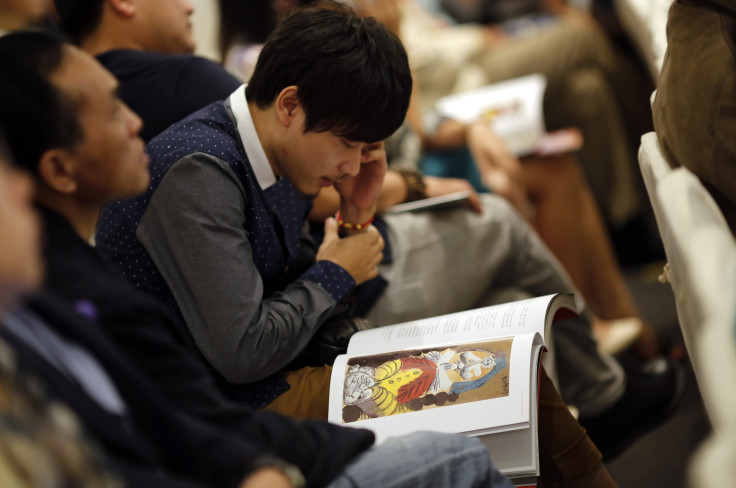China's Money Laundering: Wealthy Chinese Smuggling Cash Out Using Art

Wealthy Chinese with ill-gotten cash have found a high-class way to launder it: Bypassing Beijing's strict capital controls, they're buying expensive art and moving money out of the country that way.
China has built laws around prohibiting the offshore money laundering common among wealthy Chinese who come by their money illegally. These capital control laws say any individual can move only $50,000 out of China each year, CNN reported on Thursday.
Previously, the common ploy involved laundering money through casinos in Macau or creating fake trade invoices, but the en vogue way now is buying paintings, sculptures and calligraphy pieces, then selling them for a hefty price outside China. The profits, in foreign currencies and clean, are then pocketed. Alternatively, someone can purchase a piece of art from abroad for an inflated price, and then transfer the cash into an offshore bank account.
"Items can be bought and sold relatively anonymously, and even when a transaction occurs, complex ownership schemes -- many with a degree of secrecy attached -- are widespread," said Paul Tehan of TrackArt, a Hong Kong-based art risk consultancy.
These practices are advantageous because prices for art pieces can be fuzzy, they are easy to move across borders, and at times fakes can be hard to spot. Payment is also usually made in cash, making it difficult to track where the money came from.
"The core of any successful money-laundering enterprise is secrecy -- the lack of a defined 'paper trail,'" said Lynda Albertson, CEO of the Association for Research into Crimes Against Art, according to CNN. “That makes the secretive nature of the art market in general, and China's market specifically, ideal for covering illicit activities."
Furthermore, it's hard to accuse a buyer of overpaying for a piece of art. China’s art market is estimated to be worth $15 billion, and as it continues to grow, tracking illegal deals will become even harder. But the government has has some recent success in catching schemers. In 2012, an art shipping company was busted for allegedly faking the value of imported art to help buyers avoid millions in import duties.
An estimated $1.08 trillion in illicit capital flowed out of China between 2002 and 2011, according to Global Financial Integrity, a U.S.-based advocacy group. It’s difficult to estimate how much of that was attributable to fine art, and the criminal activity involving art has become a major headache for China’s flourishing legitimate art industry.
"It's causing a lot of confusion about art investing, and how to collect art,” said Katie de Lilly, director of Hong Kong’s 10 Chancery Lane Gallery, according to CNN.
© Copyright IBTimes 2024. All rights reserved.





















